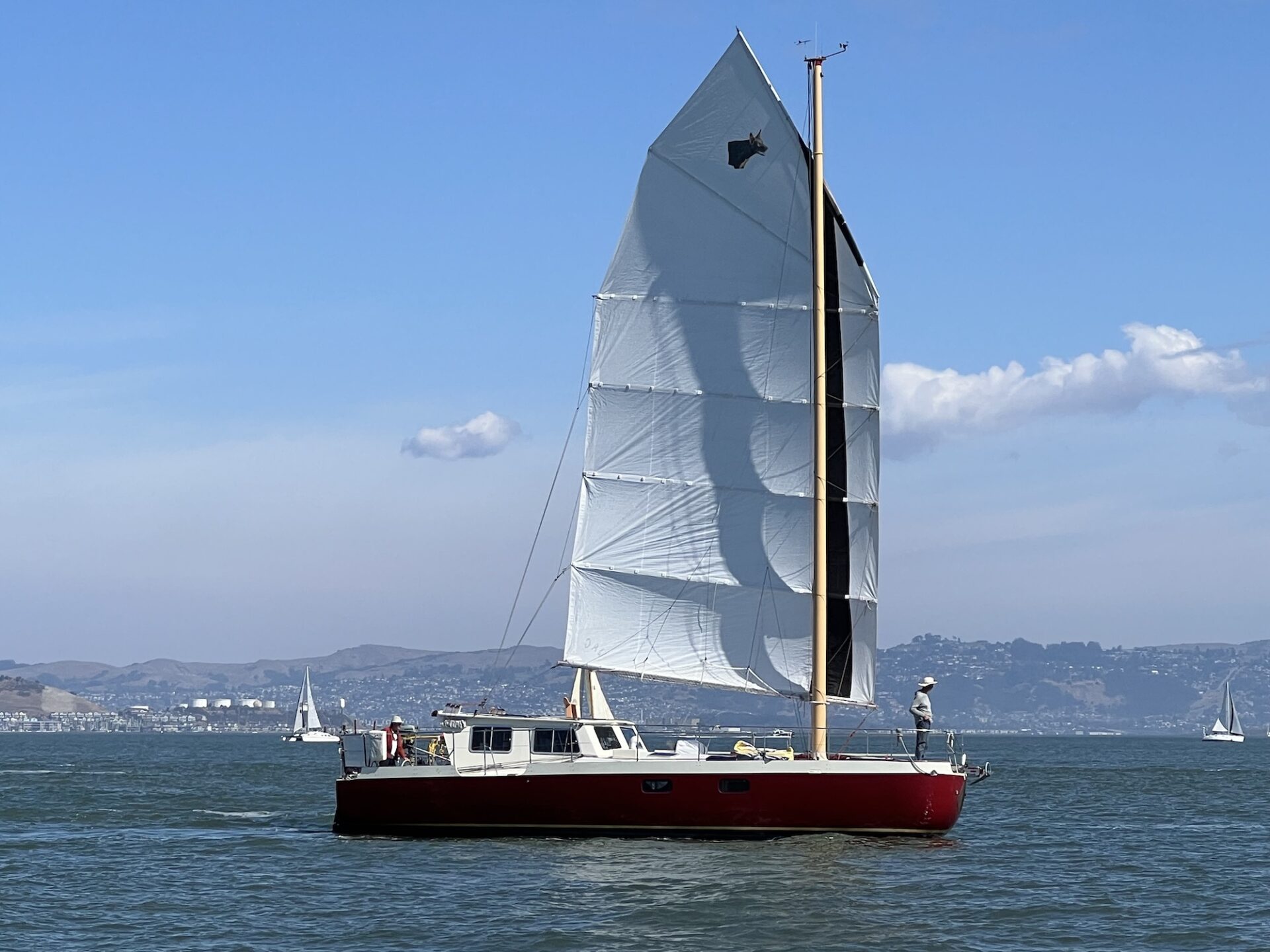
The Radical Uniqueness of ‘Rosie G’
There are many things you might be curious about if you cross tacks with the maroon, junk-rigged, 42-ft scow-bowed, Jim Antrim-designed cruising boat Rosie G. You might wonder who WAG sailmakers are when you notice the logo on the sail, or note her silence if she motors by, or be concerned there’s no cooling water coming from her exhaust. You might also wonder, “What’s up with that bow?”
These are all good questions that can be answered by Rosie G’s creator, Barry Spanier, and his wife Samantha, who have been out refining their new creation, launched several months ago after she was built at Berkeley Marine Center.

Rosie G was designed by local legend Jim Antrim, but many of her architectural design elements fall under the “WAG” concept, which in the designer milieu is an acronym for “Wild-Ass Guess.” In an era of CAD/CAM, AI and algorithms there are still plenty of variables and personal preferences when it comes to creating something unique. Barry’s creative perspectives are what made him a successful and sought-after windsurfing sail designer for decades. Now, shifting gears, he’s poured his alternative creative ideas into a unique concept for cruising boats.
Of course, neither junk-rigged boats nor scow bows are new. Junk rigs were pioneered in Asia centuries ago and applied to modern use by Blondie Hasler, who sailed a junk-rigged Folkboat across the Atlantic in the Singlehanded Transatlantic race in the ’60s. Scow-bowed boats are popular in the Great Lakes, the lumber schooner Alma, and the revolutionary scow-bowed 21-footers that have also been winning the Mini Transat transatlantic race for years. (Spanier has said that modern America’s Cup foiling monohulls have what are essentially scow bows, which keep the boats’ noses from digging when they slam into the water off their foils.)
A curious, inventive creator like Barry thought it could make sense to combine the simplicity of a junk rig with the performance and interior volume of a scow-bowed cruiser, aided by the refinement of a noted naval architect like Antrim to come up with a visionary 42-ft cruiser. Our sail aboard Rosie G confirmed there’s still lots of room for restless minds to evolve the concept of cruising sailboats. A pleasant Sunday sail demonstrated more of the intricate, unique details such as a quiet Electric Yacht auxiliary and lithium batteries with lots of power available from Sunpower solar panels covering ample real estate atop a broad pilothouse.
The pilothouse itself allows for 360-degree views from the interior, and the ample beam allows the cruising sailmaker to have a dining table that also houses a sewing machine right in the main salon. A composting head minimizes thru-hulls and eliminates hoses and holding tanks. The electric drive means there are no tanks on board for fuel. And hydroponic growing pots allow for vegetables to be grown on board.
Read more in the November issue of Latitude 38.

WOW I like, and I’m not a sailor, but all the concepts make sense, and though not a fan of going all electric (batteries are toxic waste a some point, and some concern about fire from such batteries), but still wow.
Read his book on building a ferro cement sailboat way back when… met Barry and Sam briefly in Lahaina a decade ago when they were fixing up a Westsail 42 that was lost this year on August 8 Lahaina fire…
Small world.